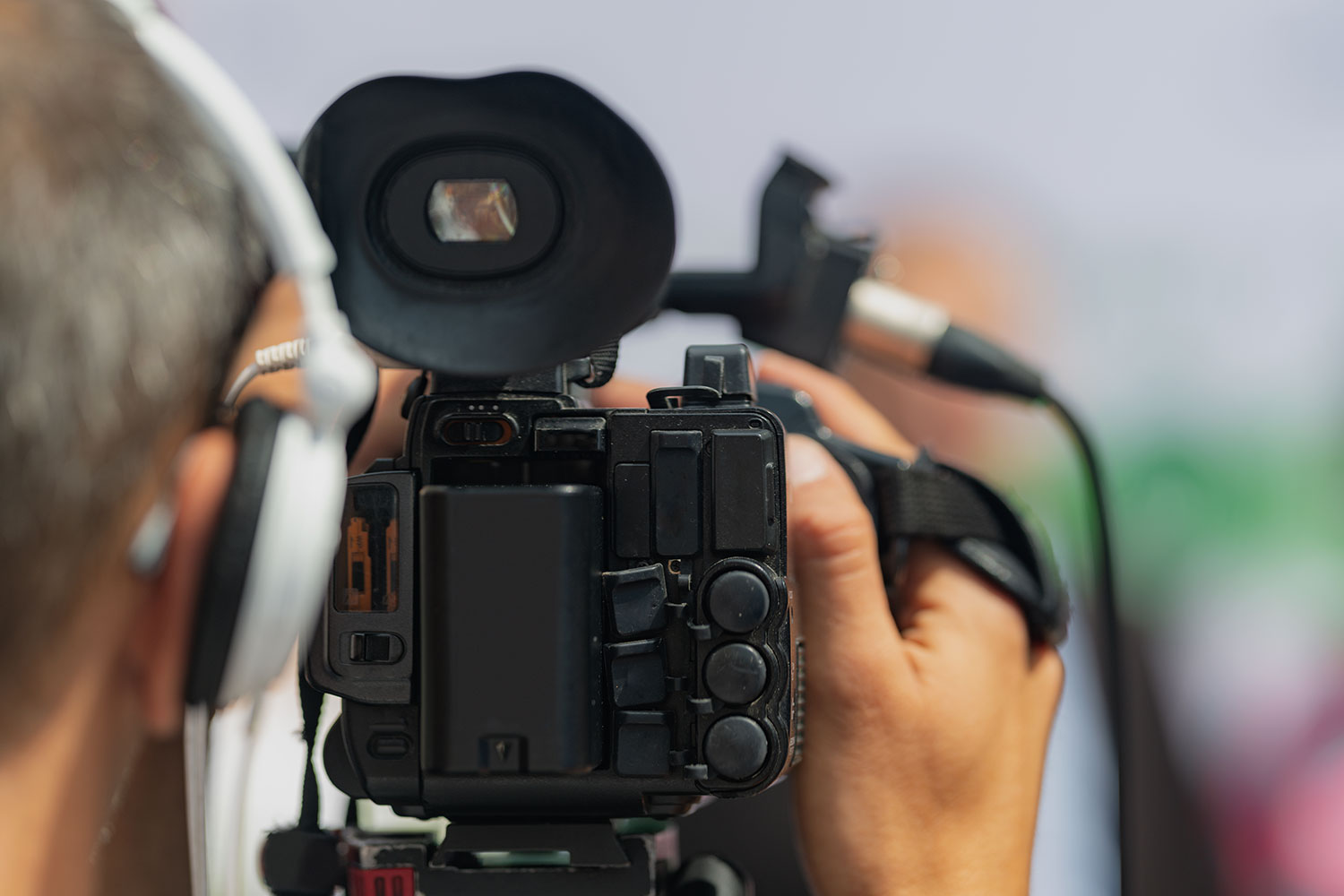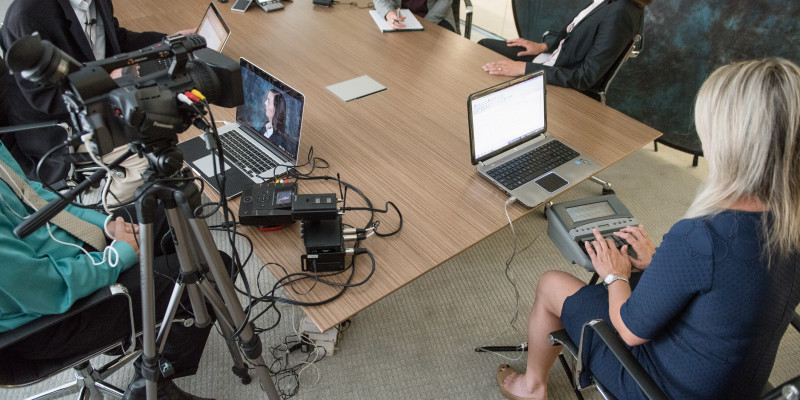The Role of Legal Videography in Modern Legal Process
The Role of Legal Videography in Modern Legal Process
Blog Article
Looking Into the Systems of Legal Videography: Introduction Its Procedure in Shielding Genuine Visual Testimony for Judicial Proceedings
In the world of judicial process, the duty of legal videography stands as a cornerstone in maintaining and providing aesthetic proof. As innovation remains to advancement, the devices behind legal videography have actually ended up being progressively detailed, providing an essential layer of credibility to testaments caught on video. By delving right into the operational intricacies of legal videography, one can discover the meticulous processes that safeguard the honesty of visual proof provided in court rooms - Legal Videography. This expedition not just drops light on the historic advancement of lawful videography however additionally means the future patterns that might further change just how visual testimonies are maintained in the world of justice.
Historic Evolution of Legal Videography
Checking out the historical development of legal videography exposes a considerable change in the capturing and discussion of aesthetic evidence within the legal landscape. In the past, lawful proceedings greatly counted on written pictures and transcripts to record occasions and provide evidence. With the introduction of video clip modern technology, the legal sector witnessed a paradigm shift in how aesthetic statement was caught and provided.
The advancement of lawful videography can be mapped back to the late 20th century when innovations in video recording equipment made it much more accessible for use in courtrooms. This technical improvement not just enhanced the accuracy and dependability of aesthetic evidence but also revolutionized the means instances were offered to courts and juries (Legal Videography). Attorneys began to acknowledge the persuasive power of video clip recordings in communicating feelings, nuances, and non-verbal signs that composed records or photographs alone might not capture effectively

Technology Advancements in Video Documentation
What key technological innovations have revolutionized video documents in the lawful field? The lawful area has actually seen significant innovations in video documentation technology that have enhanced the credibility and dependability of aesthetic proof in judicial process. One of the vital advancements is high-def (HD) video clip recording capabilities, which provide crystal-clear pictures and sharp details that are vital for accurately catching testaments, faces, and various other aesthetic hints. In addition, the combination of timestamping and metadata attributes in video clip paperwork tools has made it possible for specific documentation of when and where the video clip was videotaped, guaranteeing the honesty of the evidence presented in court.
Moreover, developments in video file encryption and watermarking innovations have bolstered the safety and tamper-proof nature of video proof, safeguarding it versus unauthorized modifications or tampering. The advent of cloud storage solutions and remote gain access to capacities has streamlined the storage, access, and sharing of video clip evidence, promoting smooth collaboration among legal specialists and making sure efficient access to vital visual testaments when needed. These technical innovations in video documents have definitely reinvented the lawful field, improving the precision, credibility, and admissibility of visual evidence in judicial proceedings.
Duty of Lawful Videographers in Court Room Settings
The evolution of video documentation technology in the legal field has required an important duty for lawful videographers in courtroom setups, ensuring the honesty and dependability of aesthetic statements presented throughout judicial procedures. Legal videographers play a fundamental function in capturing and preserving exact aesthetic proof that can be pivotal in lawsuit. Their obligation includes setting up equipment, recording proceedings, and creating premium videos that properly mirror the events in the court room.
In court setups, legal videographers must adhere to strict guidelines and requirements to keep the credibility of the visual record. They need to have an eager eye for read the full info here information and a detailed understanding of lawful procedures to make certain that the video footage they record is a real depiction of the events that transpired. Furthermore, legal videographers often work closely with lawful groups to make sure that the video evidence aligns with the instance's demands and can be efficiently provided in court to sustain the lawful arguments being made. Generally, the function of legal videographers in court room settings is vital in maintaining the concepts of justice and ensuring the transparency of legal process.

Ensuring Admissibility and Stability of Video Clip Proof
To preserve the credibility of aesthetic evidence provided in legal proceedings, making certain the admissibility and integrity of video clip proof is an important duty for legal videographers. Admissibility describes the approval of evidence by the court, and for video clip proof to be admissible, it needs to fulfill specific criteria. Lawful videographers play a critical duty in making certain that the video clips they record follow the rules of evidence, such as reliability, importance, and authenticity.
Stability of video clip evidence involves keeping the originality and precision of the footage from the moment it is recorded till it is presented in court. This consists of securely keeping the video documents, documenting the chain of wardship, and preventing any kind of tampering or alterations. Lawful videographers need to comply with strict protocols to assure the stability of the video clip proof and stop any kind of difficulties to its authenticity.
Future Trends in Legal Videography
Offered the increasing reliance on innovation in lawful procedures, lawful videographers are positioned to accept cutting-edge advancements forming the future of visual testimony capture and presentation. One of the famous patterns coming up is the combination of virtual truth (VIRTUAL REALITY) and augmented fact (AR) technologies right into legal videography. These innovations have the prospective to change just how aesthetic proof is offered in court rooms, allowing courts and judges to immerse themselves in the scene of the criminal activity or incident.
Furthermore, making use of expert system (AI) formulas for video evaluation is expected to simplify the procedure of evaluating and evaluating huge amounts of video footage. AI can aid in Homepage determining key minutes, abnormalities, and patterns within video clips, enhancing the effectiveness of legal investigations.

Conclusion
In conclusion, legal videography has actually played an essential function in offering authentic visual proof for judicial proceedings. Via technical advancements and the expertise of lawful videographers, the integrity and admissibility of video clip evidence are made sure in courtroom settings. As legal videography proceeds to advance, it will be important to support criteria that maintain the precision and integrity of visual statement for the future of lawful procedures.
Examining the historic development of lawful videography exposes a substantial change in the capturing and discussion of visual proof within the lawful landscape.The development of video documentation innovation in the lawful field has demanded an essential role for legal videographers in court setups, ensuring the stability and reliability of visual testimonies presented during judicial proceedings. Furthermore, lawful videographers usually function carefully with lawful teams to guarantee that the video proof lines up with the situation's demands and can be efficiently offered in court to support the legal debates being made.To maintain the integrity of visual proof presented in legal process, making sure the admissibility and stability of video clip evidence is an essential duty for lawful videographers. As legal videography proceeds to evolve, it will certainly be crucial to support requirements that maintain the accuracy and integrity of aesthetic statement for the future of legal procedures.
Report this page